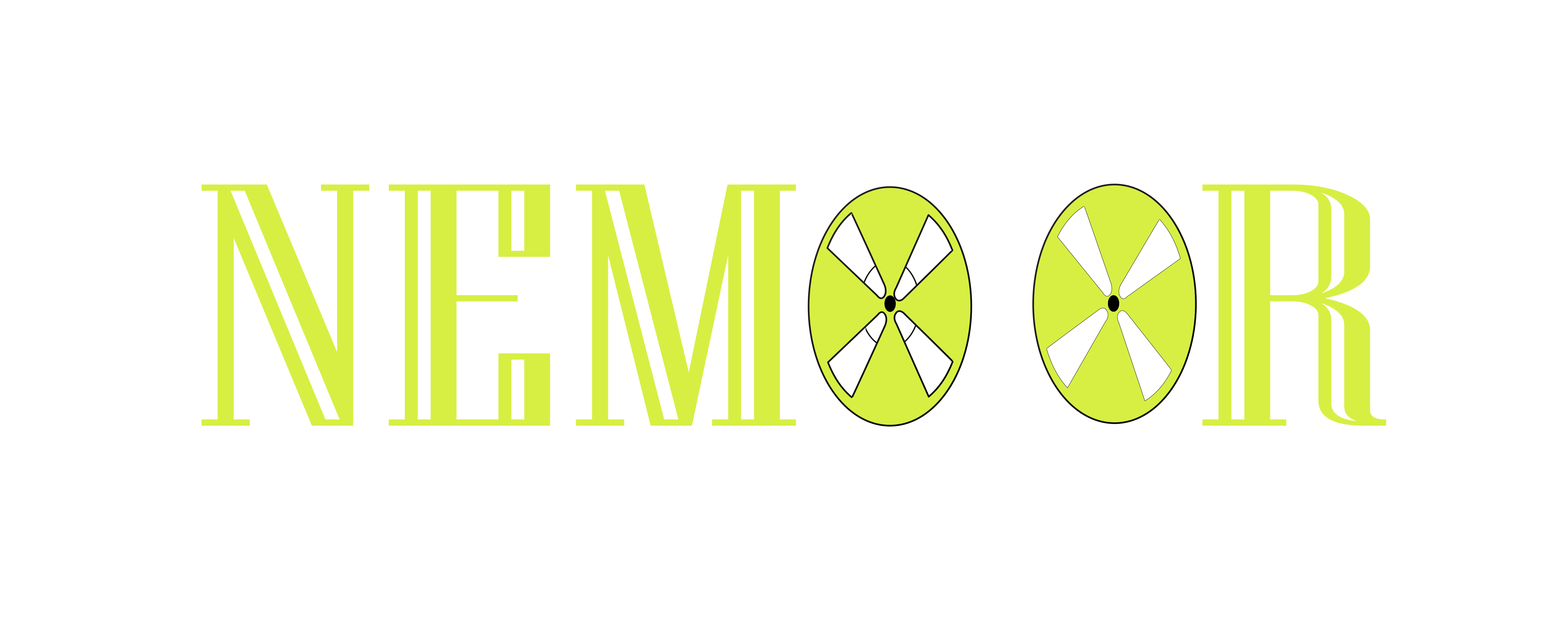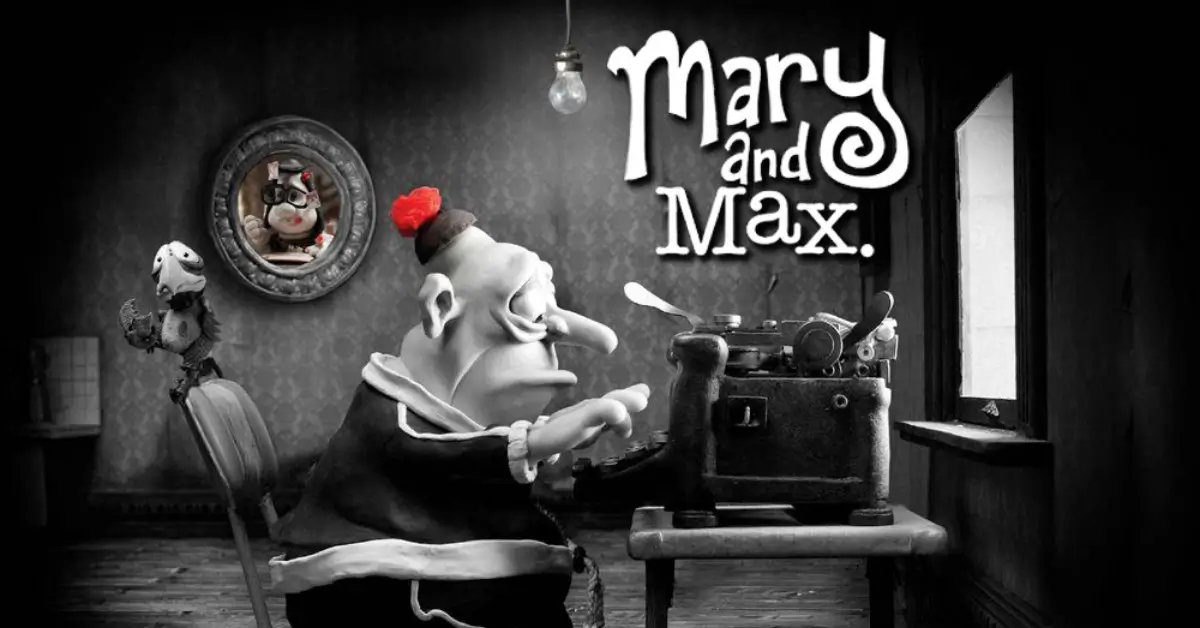Mary and Max: A Clay-Animated Masterpiece on Neurodiversity and Connection
In the often colorful world of animation, Adam Elliot’s “Mary and Max” stands apart with its deliberately muted palette and unflinching examination of mental health challenges. This 2009 clay-animated feature tells the story of an unlikely friendship between two isolated souls separated by age, distance, and neurological differences. Through meticulous stop-motion animation and a narrative that balances whimsy with profound melancholy, the film offers one of cinema’s most sensitive and nuanced portrayals of autism spectrum disorder, anxiety, depression, and the universal human need for connection despite our differences.
Thank you for reading this post, don't forget to subscribe!Basic Film Information
Title: Mary and Max
Release Date & Production Year: 2009 (premiered at Sundance Film Festival)
Director: Adam Elliot (Academy Award-winning animator known for his distinctive clayography style and focus on outsider characters)
Screenwriter: Adam Elliot
Main Cast & Characters:
- Toni Collette (voice of Mary Daisy Dinkle)
- Philip Seymour Hoffman (voice of Max Jerry Horowitz)
- Barry Humphries (Narrator)
- Eric Bana (voice of Damian Popodopoulos)
- Bethany Whitmore (voice of young Mary)
Genre: Clay-animated dramedy/Black comedy
Awards: Grand Jury Prize at Ottawa International Animation Festival, AACTA Award for Best Film, numerous festival awards for animation
Runtime & Rating: 92 minutes, Not Rated (contains mature themes including mental illness, suicide, addiction, and brief sexual content)
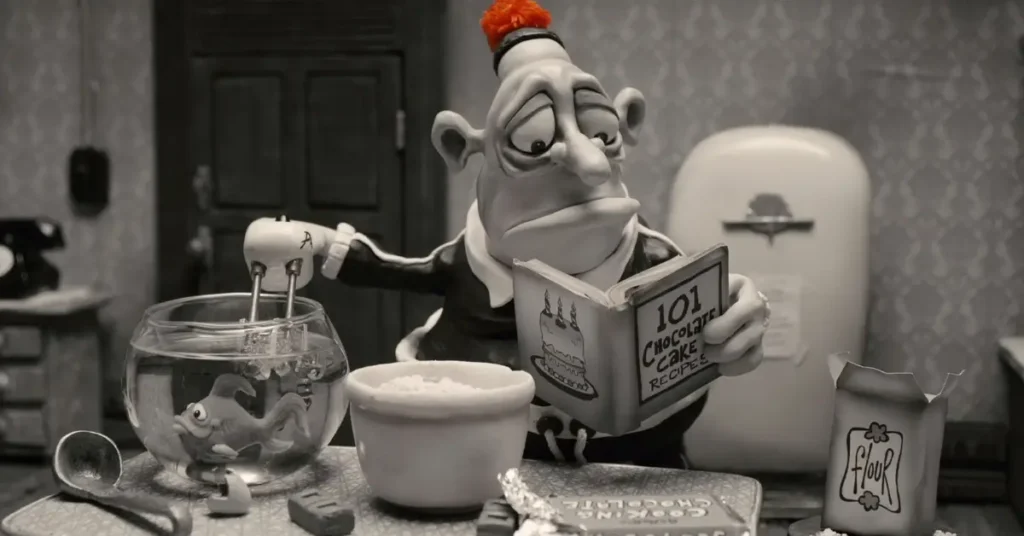
Plot Summary
General Overview
“Mary and Max” chronicles the 20-year pen pal relationship between Mary Daisy Dinkle, an 8-year-old girl living in the Melbourne suburbs of Australia, and Max Jerry Horowitz, a 44-year-old Jewish man with Asperger’s syndrome living in New York City. Beginning in 1976, their unlikely friendship unfolds through letters that traverse continents, connecting two deeply isolated individuals who find in each other the understanding they cannot find in their immediate surroundings.
Mental Health Themes
The film explores numerous mental health themes with remarkable sensitivity:
- Autism spectrum disorder (Max’s Asperger’s syndrome)
- Severe anxiety and panic attacks (experienced by both characters)
- Depression and suicidal ideation
- Alcoholism (Mary’s mother)
- Agoraphobia (Max rarely leaves his apartment)
- Body image issues and eating disorders (Mary’s struggles with weight and self-image)
- The impact of bullying and social isolation
- The therapeutic value of connection and understanding
Key Turning Points
Several pivotal moments shape the narrative and illuminate the characters’ psychological journeys. Mary’s initial letter to Max, chosen at random from a New York phone book, sets their correspondence in motion. Max’s candid explanation of his Asperger’s syndrome provides Mary with insight into neurodiversity. When adult Mary publishes a book about Max’s condition without his permission, his sense of betrayal triggers a severe breakdown, highlighting issues of consent and respect regarding mental health differences. Their eventual reconciliation speaks to the possibility of forgiveness and understanding across neurological differences.
Ending Analysis
The film concludes with Mary finally visiting Max’s apartment after receiving no response to her apology letter, only to find that he has died peacefully while contemplating their friendship. In a poignant final scene, Mary discovers that Max has preserved all her letters and created a ceiling installation of their correspondence a physical manifestation of their connection. This bittersweet ending refuses saccharine resolution yet affirms the profound impact of their relationship. It suggests that meaningful connection is possible even across vast differences, and that understanding another’s mind can be life-changing for both parties.
Setting & Cinematic Techniques
Filming Locations
As a stop-motion animated film, “Mary and Max” was created entirely on sets at a studio in Melbourne, Australia. The film contrasts Mary’s sepia-toned Australia with Max’s black-and-white New York City, visually representing their different worlds while using limited color accents (like red pom-poms or chocolate) to highlight emotional touchpoints. The claustrophobic apartment spaces and urban environments reflect the characters’ psychological confinement.
Cinematography
Director of Photography Gerald Thompson employs sophisticated cinematography techniques despite the constraints of stop-motion animation. The film uses deliberate framing to emphasize the characters’ isolation, often placing them in corners or against vast empty spaces. Dynamic camera movements are rare, with the static shots reflecting the characters’ stagnation. When the camera does move significantly such as pulling back to reveal Max’s letter ceiling the effect is emotionally powerful.
The film’s distinctive visual style includes imperfect clay figures with visible fingerprints, embracing the “handmade” quality that mirrors the imperfect yet authentic nature of the characters themselves. The limited color palette sepia for Australia, grayscale for New York, with occasional red accents creates a visual language that emphasizes emotional states over realistic representation.
Sound & Music
Dale Cornelius’s wistful, minimalist score perfectly complements the film’s emotional tone, using simple piano motifs and subtle orchestration to underscore poignant moments without manipulating audience emotions. The sound design stands out for its meticulous attention to small details the clacking of a typewriter, the rustle of paper, the ambient noises of the city that ground this stylized world in sensory reality. Particularly effective is the sound design during Max’s anxiety attacks, which helps viewers experience his overwhelming sensory processing.
Acting & Character Portrayal
Lead Voice Performances
Philip Seymour Hoffman’s performance as Max represents one of the most nuanced portrayals of autism in film history. Speaking in a monotone that never becomes caricature, Hoffman conveys Max’s emotional life through subtle variations in pacing and emphasis. His performance captures the literal thinking, social difficulties, and sensory sensitivities associated with Asperger’s syndrome while never losing sight of Max’s humanity and depth.
Toni Collette brings Mary to life across different life stages, modulating her voice to show Mary’s growth from childhood curiosity through adolescent angst to adult complexity. Her performance captures Mary’s persistent insecurity and yearning for connection with delicate precision.
Supporting Characters
Barry Humphries’ narration provides contextual information with a droll detachment that prevents the film from becoming sentimental despite its emotional subject matter. Eric Bana as Damian, Mary’s eventual husband, and Bethany Whitmore as young Mary deliver performances that balance the film’s quirky humor with psychological authenticity.
Accuracy & Authenticity
“Mary and Max” stands out for its remarkably accurate portrayal of Asperger’s syndrome, informed by director Adam Elliot’s personal relationship with a friend on the autism spectrum. Max’s character avoids the “savant” stereotypes common in autism portrayals, instead showing the day-to-day challenges and unique perspectives associated with the condition. The film depicts Max’s sensory sensitivities, difficulty interpreting social cues, preference for routine, special interests, and literal thinking with precision that resonates with many viewers on the spectrum.
The portrayal of anxiety, depression, and social isolation in both main characters similarly reflects psychological reality rather than cinematic convenience. The film acknowledges the chronic nature of mental health challenges, showing how characters live with their conditions rather than experiencing miraculous cures.
Mental Health Representation: Strengths & Weaknesses
Psychological Accuracy
The film’s greatest strength lies in its nuanced, multi-dimensional portrayal of neurodevelopmental and mental health conditions. Max’s Asperger’s syndrome is presented not as a character quirk or superpower but as an integral part of his identity that brings both challenges and unique perspectives. The film accurately depicts the sensory overwhelm, social confusion, and anxiety that often accompany autism while also showing Max’s intelligence, honesty, and capacity for deep attachment.
Mary’s mental health struggles including anxiety, depression, and alcoholism are similarly depicted with sensitivity and accuracy. The film shows how her childhood isolation and her mother’s alcoholism contribute to her psychological vulnerabilities, presenting a realistic picture of how mental health challenges often have both neurological and environmental components.
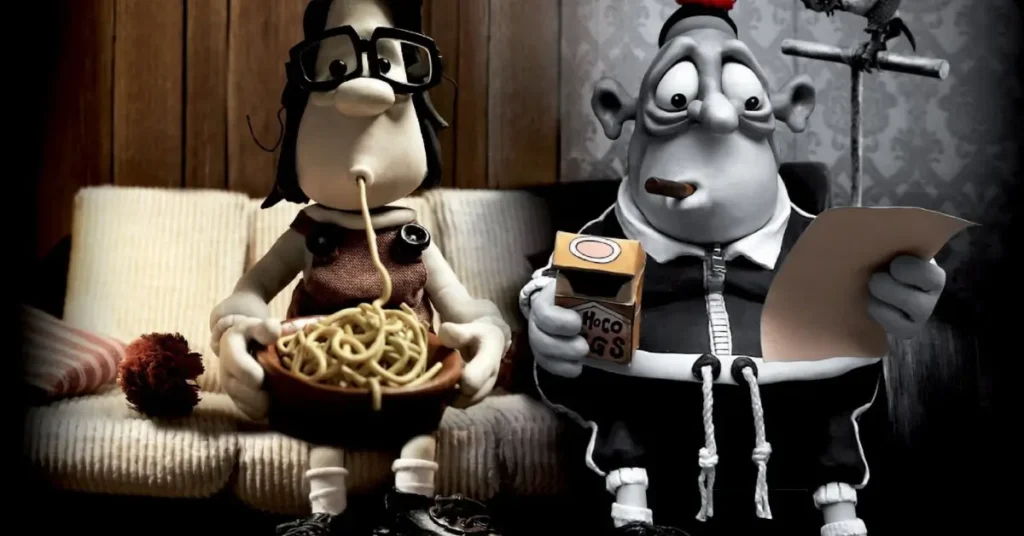
Stigmatization vs. Awareness
“Mary and Max” actively challenges stigma around mental health and neurodiversity by presenting its protagonists as complex, sympathetic characters whose conditions are neither romanticized nor demonized. The film invites viewers to see the world through Max’s perspective, fostering understanding of how someone with autism might experience everyday situations. Rather than presenting neurotypicality as the default or ideal state, the film suggests that different minds perceive reality differently, with no single perspective having absolute validity.
The film does not shy away from showing the genuine difficulties that mental health conditions can create, including Max’s hospitalization after a breakdown and Mary’s suicide attempt. However, it never suggests that these challenges make the characters’ lives less worthy or meaningful.
Impact on Public Perception
By creating characters whose mental health challenges are integral to their identities yet do not define them completely, “Mary and Max” helps shift public perception toward a more nuanced understanding of neurodiversity. The film emphasizes that connection is possible across neurological differences when approached with patience and genuine interest in understanding another’s perspective.
The film’s impact is enhanced by its refusal to offer simplistic “cures” or transformations Max remains autistic throughout, Mary continues to struggle with anxiety and self-image. This realistic approach counters harmful narratives about “overcoming” mental health conditions and instead shows how people learn to live meaningful lives alongside their challenges.
Critical Reception & Awards
Critics’ Reviews
“Mary and Max” received overwhelmingly positive reviews from critics, who praised its distinctive visual style, emotional depth, and sensitive handling of complex themes. The film holds a 95% rating on Rotten Tomatoes, with critics particularly highlighting its ability to balance humor with serious subject matter. Roger Ebert gave it 4 out of 4 stars, calling it “a film about loneliness and the courage to reach out” that “shifts between tears and laughter.”
Mental health professionals have generally responded positively to the film’s portrayals, with many autism advocates particularly noting Max’s character as one of the most authentic representations of Asperger’s syndrome in cinema.
Audience Reactions
The film has developed a devoted following, particularly among viewers who identify with its themes of isolation and difference. Many viewers on the autism spectrum have expressed appreciation for Max’s character, noting that they rarely see themselves represented with such nuance and dignity in mainstream media. General audiences have embraced the film despite its sometimes challenging subject matter, drawn in by its blend of quirky humor, visual creativity, and emotional authenticity.
Awards & Nominations
“Mary and Max” opened the 2009 Sundance Film Festival the first animated film ever to do so and went on to win numerous awards including the Annecy Cristal at the Annecy International Animated Film Festival and the Grand Jury Prize at the Ottawa International Animation Festival. In Australia, it won the AACTA (formerly AFI) Award for Best Film. Despite its critical acclaim, the film was notably overlooked for an Academy Award nomination, highlighting the ongoing challenges for adult-oriented animation to receive mainstream recognition.
Cultural & Social Impact
Discussions Sparked
The film has stimulated important conversations about autism representation in media, with many autism advocacy organizations citing it as a rare example of a portrayal that neither sensationalizes nor sanitizes the condition. Educational institutions have used the film to foster discussions about neurodiversity, mental health stigma, and the importance of inclusive communication.
Influence on Other Films
“Mary and Max” has influenced subsequent animated films’ approaches to mental health themes, demonstrating that animation can be a powerful medium for exploring complex psychological states. Its success has helped pave the way for other adult-oriented animated films that address serious themes with nuance and artistic sophistication.
Mental Health Advocacy
Mental health organizations have embraced the film as an educational tool, using it to illustrate both the challenges faced by those with conditions like autism and anxiety and the importance of understanding and acceptance. The film’s emphasis on letter-writing as a form of connection has inspired programs that create correspondence opportunities for socially isolated individuals.
Personal Reflection & Final Thoughts
“Mary and Max” provides profound insights into the experience of neurodiversity by inviting viewers into the subjective worlds of its characters. Through its distinctive visual style and unflinching yet compassionate approach to its subjects, the film creates an empathic understanding that goes beyond clinical descriptions of conditions like autism spectrum disorder.
For those struggling with mental health challenges, the film offers validation by presenting characters whose difficulties are taken seriously without defining their entire existence. The film suggests that connection is possible even for those who feel most isolated, while honestly acknowledging that such connection doesn’t magically erase all difficulties.
What could have been improved is the film’s limited exploration of support systems and communities beyond one-to-one friendship. While the focus on Mary and Max’s correspondence creates narrative intimacy, it might inadvertently reinforce the idea of mental health challenges as primarily individual rather than societal issues.
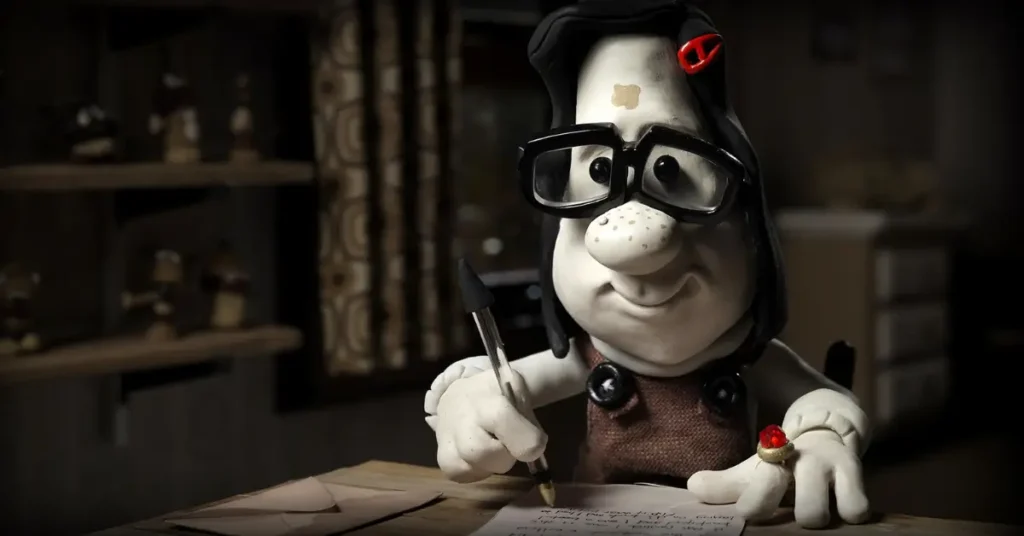
Conclusion
“Mary and Max” stands as one of animation’s most thoughtful explorations of mental health and neurodiversity, using its clay-animated medium not as a way to sanitize difficult subject matter but as a means to access emotional truths that might be harder to confront in live action. Through the unlikely friendship between a lonely Australian girl and a middle-aged New Yorker with Asperger’s syndrome, the film creates a powerful testimony to connection across difference.
The film’s enduring impact lies in its refusal to offer simplistic solutions or transformations while still affirming the profound value of understanding and being understood. By presenting characters whose mental health challenges are integral to their identities without reducing them to diagnoses, “Mary and Max” helps expand cultural understanding of neurodiversity and reminds viewers that our differences, while real and sometimes difficult, need not prevent meaningful human connection.
What are your thoughts on this film’s portrayal of autism spectrum disorder and other mental health challenges? Does animation allow for unique insights into subjective experiences that might be difficult to achieve in live-action film?
